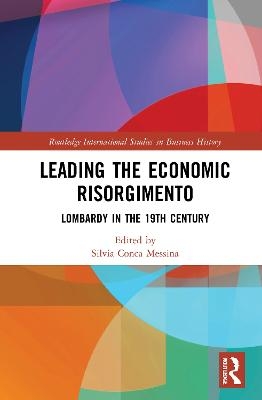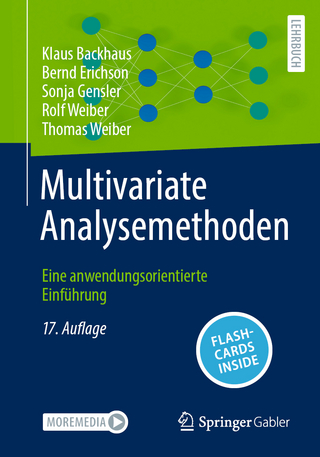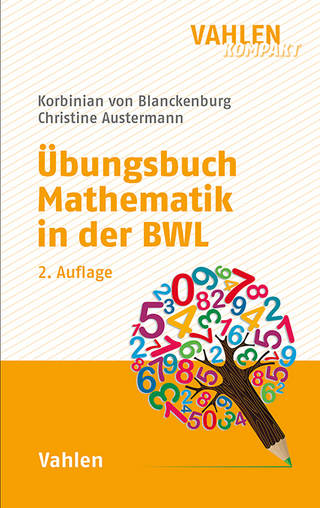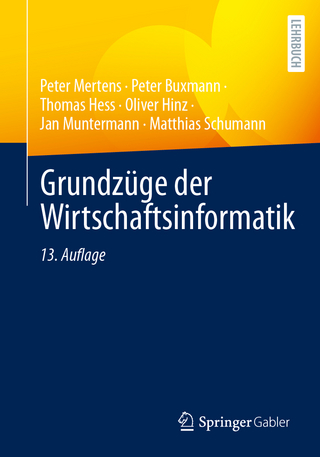
Leading the Economic Risorgimento
Routledge (Verlag)
978-0-8153-7076-5 (ISBN)
Lombardy, with about 10 million inhabitants, is today the most populated and prosperous region of Italy, and Milan is a renowned capital of art, fashion and design. During the 19th century until WWI, the region gradually became the leader in Italy’s economic development and distinguished itself in the European economic landscape for its long-standing industrial strength and diversified economy, which included one of the Europe’s most productive agricultural systems. It was the economic locomotive of contemporary Italy, contributing to the economic Risorgimento that complemented the country’s political resurgence.
The present volume gathers the contributions of some major experts on the subject, providing an in-depth analysis of Lombardy’s pattern of development, consisting of an exceptionally symbiotic and balanced interplay of sectors (agriculture, industry, trade, and banking) in a gradual yet steady growth process, also supported by progress in the education system. During the century, there was a shift away from an economy based on agriculture and commerce to a progressively more industrial economy and this process accelerated from the 1880s. The secret of this dynamic balance was Lombardy’s active relationship with the rest of Europe and with the international markets.
Aimed at scholars, researchers and students in the fields of early modern and modern history, economic and social history, the book provides a clear explanation of Lombardy’s economic development during the long 19th Century.
Silvia A. Conca Messina is an Assistant Professor of Economic History in the Department of Historical Studies at the University of Milan, Italy.
PART I: Features and Evolution of the Regional Economy: an Introduction 1. Lombardy’s development in the long 19th Century, Silvia A. Conca Messina PART II: The Economic Area: Agriculture, Trade, Industry 2. Production Systems in Agriculture, Gianpiero Fumi 3. Lombardy’s Food industries in the Italian context: An Overview 1870-1914 Silvia A. Conca Messina 4. Towards the Consolidation of an Economic Region: Cities, Trade and Transport Luca Mocarelli 5. Silk as the Leading Factor of Development Roberto Tolaini 6. The Cotton Industry 1815-1914 Silvia A. Conca Messina 7. Iron and Metalworking Sergio Onger and Valerio Varini 8. New Industries (1861-1914) Andrea Colli and Ilaria Suffia 9. Fashion: Production, Commercialization and Consumption Elisabetta Merlo PART III : The Economic Players: Business, Finance, Institutions 10. The Economic and Social Rise of Milan’s Mercantile Community (1700-1859) Stefano Levati 11. Noblemen in Business Silvia A. Conca Messina 12. Sketching the very Wealthy: Men and Women of Property (1861-1900) Stefania Licini 13. The Informal Banking Systems. A Mosaic between 19th and early 20th centuries Pietro Cafaro 14. The Regional Financial System: Institutional Varieties and Complementarity (1861- 1914) Giandomenico Piluso 15. Institutions and Agrarian Development. Fiscal Policies and Statistical Enquiries Andrea M. Locatelli and Paolo Tedeschi 16. Church, Religious Orders and Congregations, Catholic movement Giovanni Gregorini 17. Education, Institutions and Industrial Development Giorgio Bigatti
| Erscheinungsdatum | 07.09.2021 |
|---|---|
| Reihe/Serie | Routledge International Studies in Business History |
| Zusatzinfo | 12 Tables, black and white; 4 Line drawings, black and white; 4 Halftones, black and white; 8 Illustrations, black and white |
| Verlagsort | New York |
| Sprache | englisch |
| Maße | 152 x 229 mm |
| Gewicht | 453 g |
| Themenwelt | Mathematik / Informatik ► Mathematik ► Finanz- / Wirtschaftsmathematik |
| Wirtschaft ► Betriebswirtschaft / Management ► Rechnungswesen / Bilanzen | |
| Wirtschaft ► Betriebswirtschaft / Management ► Unternehmensführung / Management | |
| Wirtschaft ► Volkswirtschaftslehre | |
| ISBN-10 | 0-8153-7076-8 / 0815370768 |
| ISBN-13 | 978-0-8153-7076-5 / 9780815370765 |
| Zustand | Neuware |
| Informationen gemäß Produktsicherheitsverordnung (GPSR) | |
| Haben Sie eine Frage zum Produkt? |
aus dem Bereich


